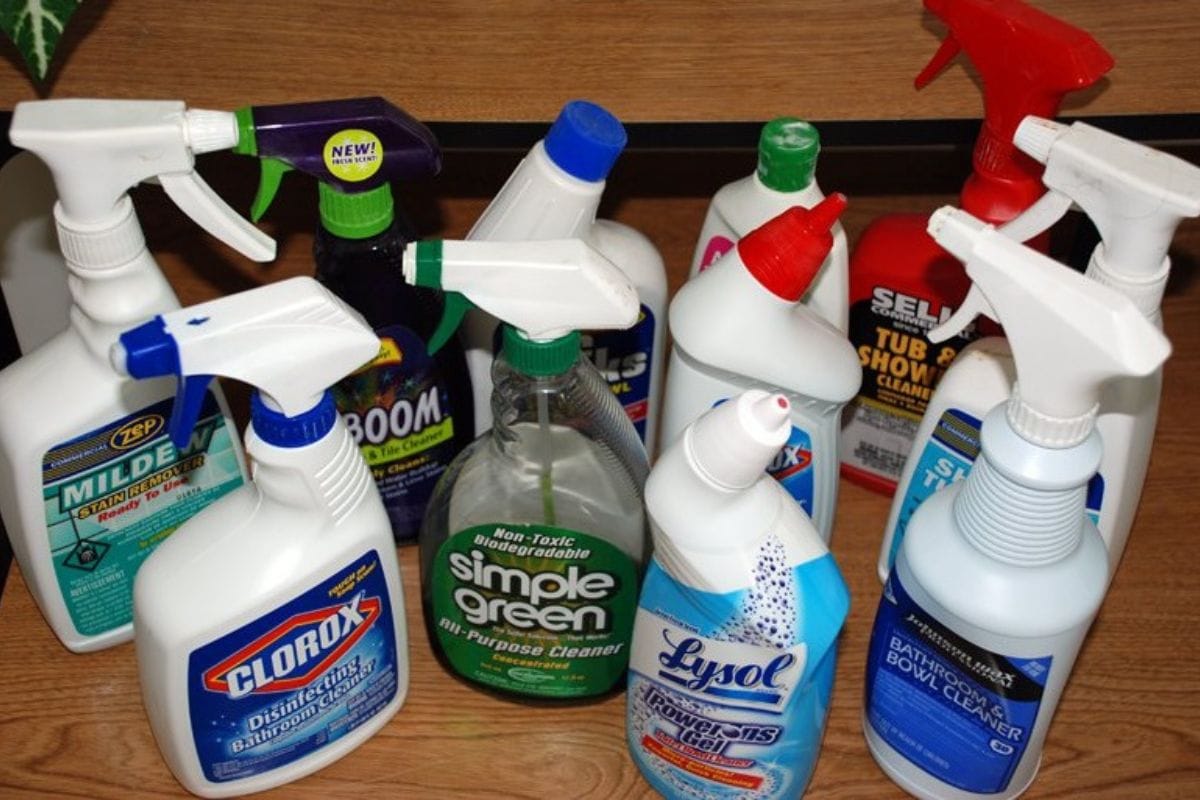Have you ever looked at the ingredients section of your toilet cleaners? Aren’t you curious to know what chemicals make your toilet clean, and fragrant?
The most active ingredient you will find in almost all toilet cleaners is hydrochloric acid. Apart from that, other ingredients include sodium hypochlorite, Sodium lauryl ether sulfate, citric acid, vinegar, borax, Sodium Hydroxide, and Quaternary Ammonium Compounds.
These chemical names would seem unfamiliar to you, so further in this article, you will get to know the role of each ingredient in the chemical cleaners, and see how harmful they can be if they come in contact with your body.
1. Hydrochloric Acid (Muriatic Acid)
The first active ingredient in all chemical cleaners is Hydrochloric acid (HCl). It is also known by the name Muriatic Acid. Most toilet cleaners contain about 10 to 20 % concentrated hydrochloric acid by volume.
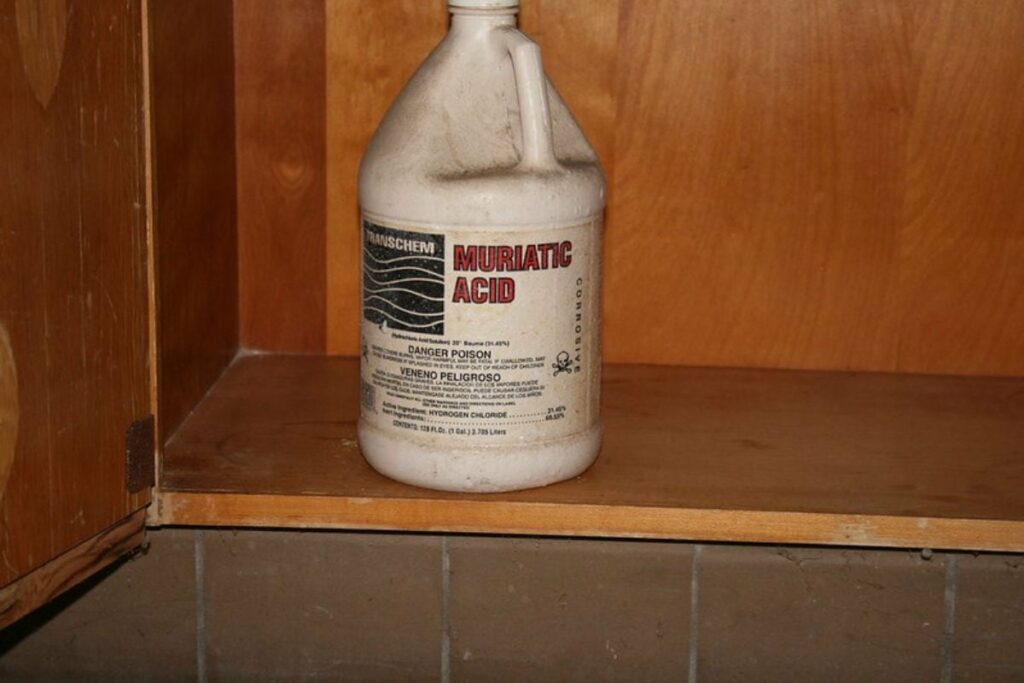
Having a pH value of 1, it is one of the strongest mineral acids. Due to this high efficacy, it is considered a fast and efficient chemical for removing tough stains. Similarly, it can wipe off the mineral deposits and scale in the toilet bowls. Furthermore, you can also unclog drains and pipelines with hydrochloric acid.
Since it is acidic, it is also corrosive. Its excessive use can corrode old plastic wipes. You need to be careful while using it as it can cause burns when it comes in contact with your skin. So, while working toilet cleaners, make sure to wear gloves and goggles.
2. Chlorine Bleach (Sodium Hypochlorite)
Chlorine bleach, chemically known as Sodium Hypochlorite (NaOCl), is another common ingredient found in toilet cleaners. Bleach is commonly known for its whitening properties. It is also a good stain remover and germ killer. Some cleaner contains a minute quantity of bleach, while bleach is also available separately as a cleaner.
You should never mix bleach with other cleaners, especially ammonia because it can make toxic fumes. However, you can use bleach along with things like baking soda or dish soap that are already good at cleaning.
Bleach, in particular, is caustic and easily makes your eyes, nose, and skin burn. It can also make asthma symptoms worse.
3. Sodium Lauryl Ether Sulfate
Sodium Lauryl Ether Sulfate (SLES) is known for its high soapy and bubble-forming capabilities. It can easily get rid of oily and greasy stains. That is why you will find SLES not only in toilet cleaners but in shampoos, detergents, and dishwashers.
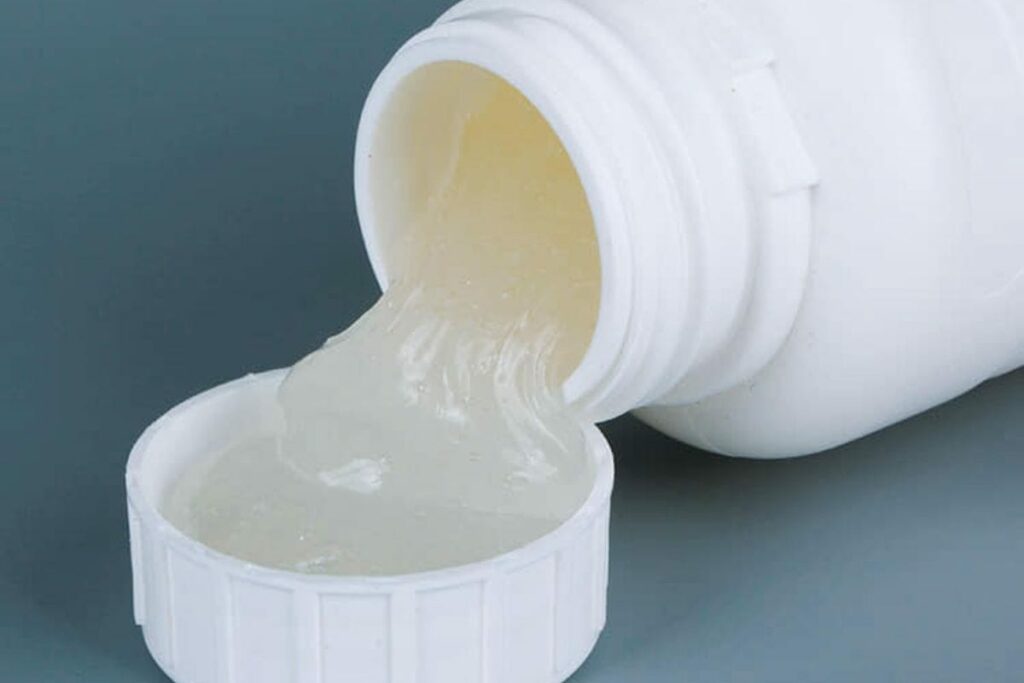
However, similar to HCl, Sodium Lauryl Ether Sulfate can cause problems to the skin, eyes, and lungs. When dealing with this chemical in concentrated form, always wear goggles and gloves.
4. Caustic Soda (Sodium Hydroxide)
Some chemical cleaners also contain trace amounts of caustic soda, chemically referred to as Sodium Hydroxide. Being basic in nature, it easily dissolves grease, oil, fatty, and limescale, and forms a water-soluble soapy solution. This process is known as saponification. These characteristic makes caustic soda an excellent cleaning agent used for unclogging drain pipes, and toilet bowls.
On a small scale, sodium hydroxide is thought to get rid of proteins and nucleic acids and stop most viruses from working. The chemical also kills yeasts, fungi, and endotoxins. Because it works well to get rid of microorganisms, sodium hydroxide is often used in the medical field as a key part of sanitation.
Despite being a good cleaning agent, it is highly corrosive to the body. It can cause skin burns and can turn you blind. So, always use safety gear while handling these chemical cleaners.
5. Quaternary Ammonium Compounds (Quats)
Since toilets may harbor a wide variety of bacteria, they must contain antibacterial components in them to maintain healthy bathroom conditions. For that, quaternary ammonium compounds or quats are added to them. Cetrimonium chloride (CTAC) is one of the Quats you will see in the ingredient list of toilet cleaners.
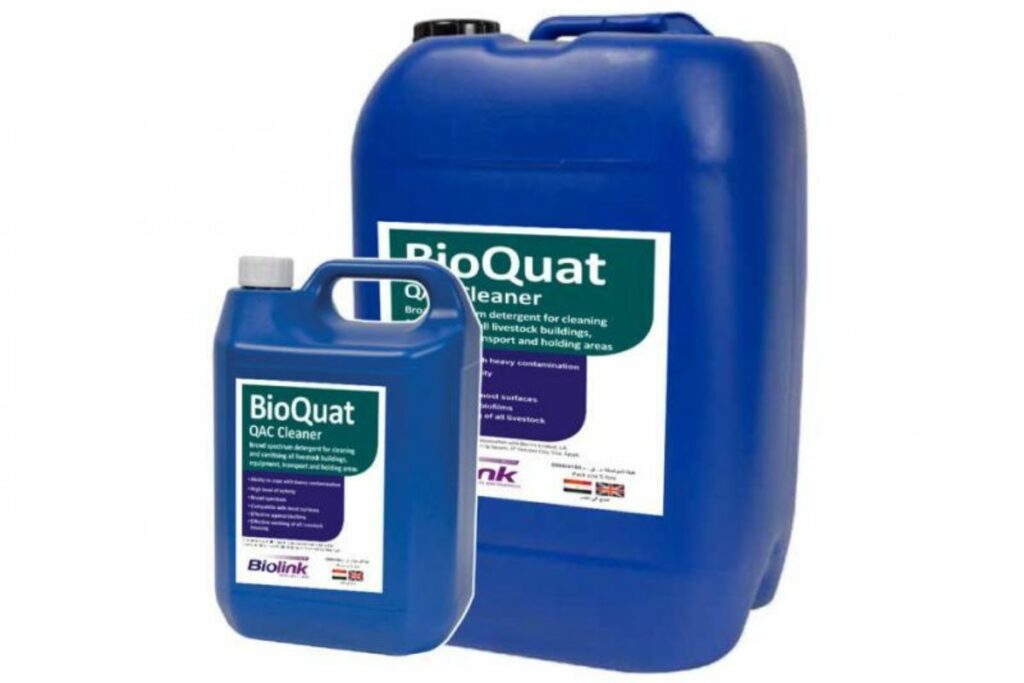
Quats are antibacterial and used as disinfectants. They are not only found in toilet cleaners but disinfectant wipes, sprays, and other household cleaners. They have the ability to kill microbes like Staph. Aureus and E. coli.
Quats are bactericidal, but they are also lung irritants that can exacerbate asthma as well as other breathing disorders. Also, they might cause skin irritation and rashes. CTAC is extremely harmful if consumed. It is suggested that you remove your contact lenses and visit your doctor right away if only a drop or two come in touch.
6. Citric Acid
Several natural toilet bowl cleansers, which rely on the mildly acidic qualities of citrus fruits like lemons and oranges, use citric acid as one of their key ingredients. Citrus acid adheres to minerals and makes it easier to scrub them away from the porcelain bowl.
Since it is not quite a strong acid, it is safe for use as a cleaning product. In addition, it leaves a lovely aroma that makes it better for domestic usage instead of harsh chemicals.
7. Vinegar
Vinegar is good for more than just cooking. You know how commonly vinegar is referred to as the chemical cleaner. It may not be present in a chemical cleaner, but itself is considered a cleaner. The acetic acid component also makes for an effective disinfectant and cleaning agent.
Vinegar’s acidity is strong enough to can break down mineral deposits, dirt, grease, and grime. Also, it is powerful enough to kill bacteria.
8. Borax (Sodium Tetraborate)
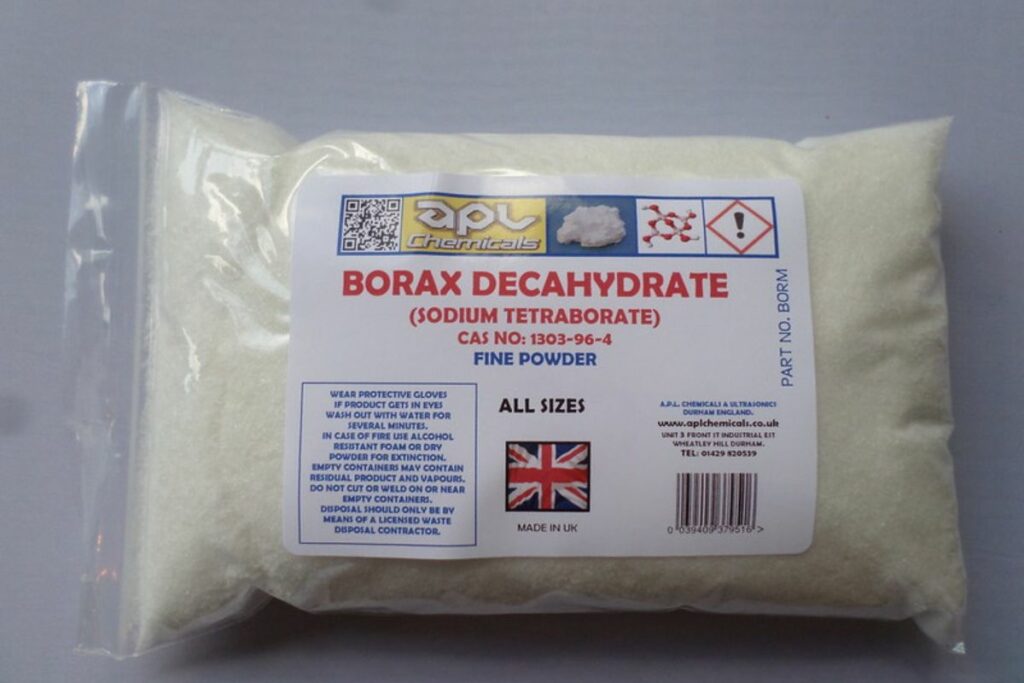
What I said for vinegar is true for Borax. It may or may not be an ingredient in chemical cleaners. However, it alone has been used for decades to clean toilets. Borax is a white powdered mineral that is mostly made up of water, oxygen, boron, and sodium. It is also known as sodium tetraborate.
Borax assists in the complete removal of mold and stains from your home. You will also find it in products designed to clean and whiten your homes, such as laundry detergent and bathroom cleaner. In addition, it eliminates smells and reduces the severity of hard water.
Since borax and boric acid have similar characteristics, they are often mistaken for one another. In contrast to sodium tetraborate, which has a wide variety of non-pesticide uses, boric acid is exclusively employed in the pesticide industry.
So, these were the active ingredients you would normally find in your household toilet cleaners. Though they make your toilet look clean and shiny, they can be extremely dangerous for you. So, it is always advised to take great care while using any type of chemical cleaner. You can wear gloves, and goggles in order to avoid contact.

Amos Christen graduated with a bachelor’s degree in Interior Design from Drexel University — Philadelphia, PA. Since 2003, Amos has worked with top interior design professionals in this area, including architects and interior/graphic/lighting designers. As a skilled interior designer, Amos Christen is highly versed in fine arts and crafts and uses that to supplement his main area of expertise. He often publishes articles related to home décor on several websites, including Sprucetoilets.com, Sprucebathroom.com, and Mybesuitedhome.com. He also contributes to leading interior design magazines.
